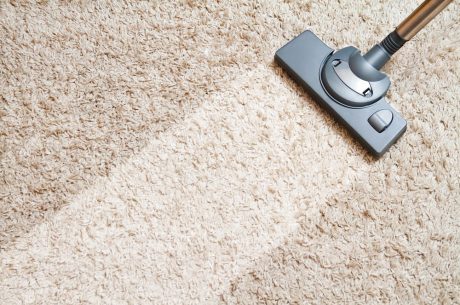When sewer lines become obstructed, preventing wastewater from flowing through drainage pipes, a blockage occurs. The thick, black water that forms as sewage is a potential hazard, containing contaminants and viruses that can present a risk of severe illness if exposed to humans or animals. If you have a sewage backup in your basement, you will need to fix it quickly. However, knowing what causes sewer backups can help you prevent a hazardous situation in your home. Here’s how to prevent and handle sewage backups in your Long Island property.
Causes for a Sewage Backup in the Basement
Clogs
Sewage can back up into your home when either your home’s drain pipes or main sewer line becomes clogged. For example, if one toilet creates a sewage backup, the drain connected to that toilet will likely be clogged. But if all toilets or bathtubs in your home create backflows, there may be a clog in the main sewer line, or the sump pump may have failed. Clogs can consist of hair, grease, or other solid materials that accumulate in the drains.
Tree Roots
Tree roots are a major cause of sewer line damage on Long Island, particularly in older neighborhoods like Huntington, Northport, and Babylon, where large, mature trees are common. Roots can grow into a pipe and cause holes or crush the sewer line by wrapping around it. Even if the trees in your yard are not the problem, roots from nearby trees can extend underground and damage your sewer system.

Damaged Sewer Lines
Many Long Island homes, especially those built before the 1980s, still rely on older cast iron or clay piping, which deteriorates over time. Aging sewage systems can break down and crack, causing backups and flooded basements. If your home is older, you may want to consider having your sewer lines inspected and, if necessary, replaced with durable PVC piping.
Heavy Rainfall
Can heavy rain cause sewer backup? Yes. Long Island’s weather patterns include heavy rainfall, tropical storms, and nor’easters, all of which can put a strain on municipal sewer systems. If the public sewer system becomes overwhelmed with excess rainfall, water can back up into homes. Coastal communities such as Lindenhurst, Massapequa, and Port Jefferson are particularly vulnerable due to rising water tables and storm surges.
How to Prevent a Sewage Backup in the Basement
- Don’t pour grease down the drain. Cooking oil can harden within your pipes, gradually stopping debris from draining and creating a clog. Instead, pour it into a heat-resistant container and dispose of it in the trash.
- Dispose of paper products properly. Flushing hygiene products such as paper towels, diapers, or feminine products down the toilet can easily clog your sewer line. Always discard them in the trash.
- Install a new plastic pipe or cut tree roots. If tree roots are a problem, consider replacing your old sewer lateral with a durable PVC pipe. If roots persist, have a professional trim them periodically.
- Install a backwater prevention valve. This device prevents sewage from backing up into your home and is particularly useful in flood-prone areas of Long Island, such as Freeport and Rockville Centre.
- Sump pump maintenance. Ensure your sump pump doesn’t sit on debris such as silt or gravel, which could damage the motor. Instead, place it on a steady, flat brick, and install a filter fabric around the sump basin to prevent debris from entering.

What You Can Do If You Have a Sewage Backup in the Basement
Calling a professional restoration company is the best way to deal with sewage backup in the basement. However, here’s what you can do to mitigate damage before help arrives:
- Evacuate the flooded area. Sewage contaminants pose a risk to both people and pets.
- Turn off electrical power in the flooded area. Electrical wires or appliances may be in contact with standing water.
- Be cautious with your main circuit breaker. If it’s in the basement and submerged, do not attempt to turn off the power yourself.
- Wear protective gear. This includes a facemask, eyeglasses, gloves, and rubber boots before walking through contaminated water.
- Shut off your main water valve. This can help prevent additional water from entering the system.
- Notify your insurance company. Keep in mind that standard homeowners insurance policies often don’t cover sewage backups unless you’ve added a specific endorsement for sewer and drain backups.
- Contact your local sewer department. If your home is connected to a public sewer, notify your town’s municipal authority.
- Avoid using the plumbing system. Until the issue is resolved, do not flush toilets or drain sinks and bathtubs.
- Ventilate the area. Open windows and doors to allow fresh air in and reduce odors.
- Disinfect standing water. Adding chlorine bleach can help reduce bacteria, but this is only a temporary measure.
For Professional Sewage Cleanup, Call the PuroClean of Huntington Water Damage Restoration Experts
If you have a sewage backup in your Long Island home, call a restoration professional right away to remediate the black water damage. Handling contaminated water yourself can put you at risk of contracting diseases. PuroClean of Huntington provides expert water damage repair and mold remediation services across Suffolk and Nassau counties. Contact us at 631-402-9700 for immediate assistance. risk of contracting diseases. Contact PuroClean of Huntington for water damage repair and mold remediation services.




 PuroClean of Huntington
PuroClean of Huntington